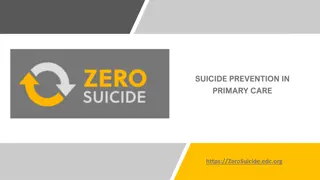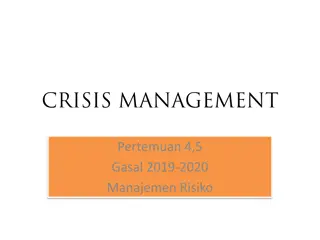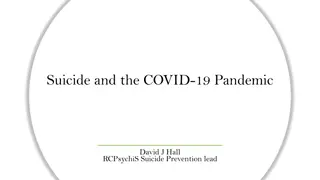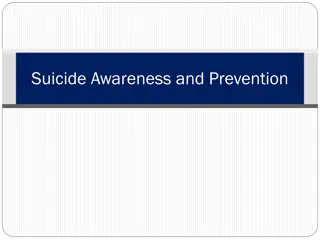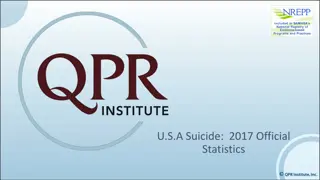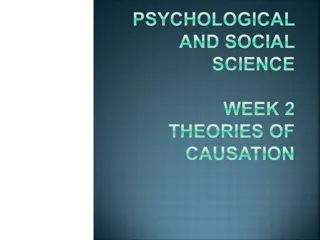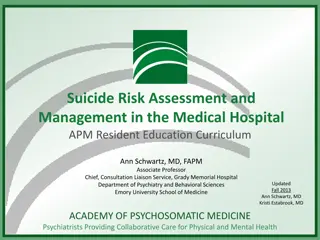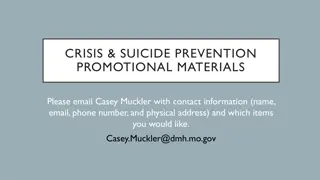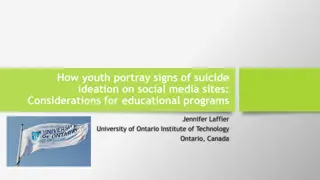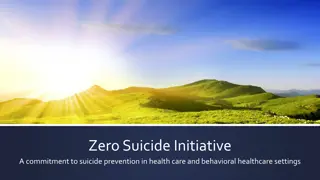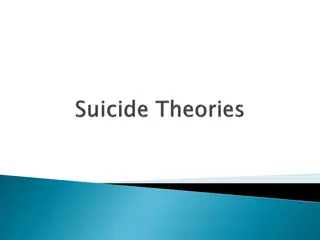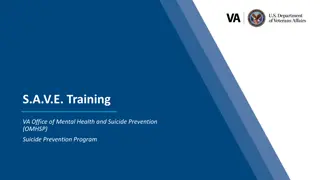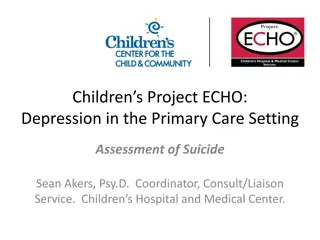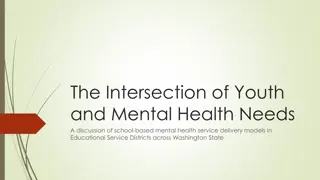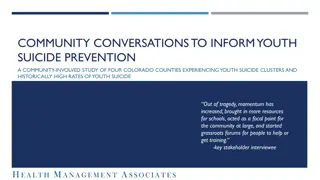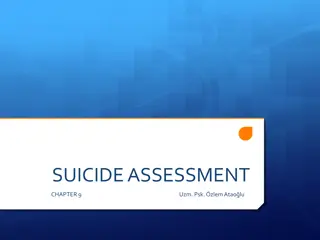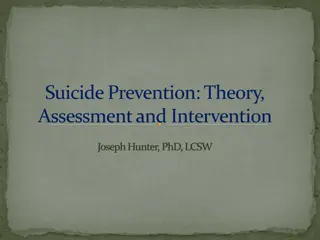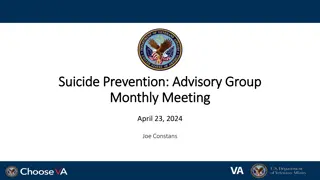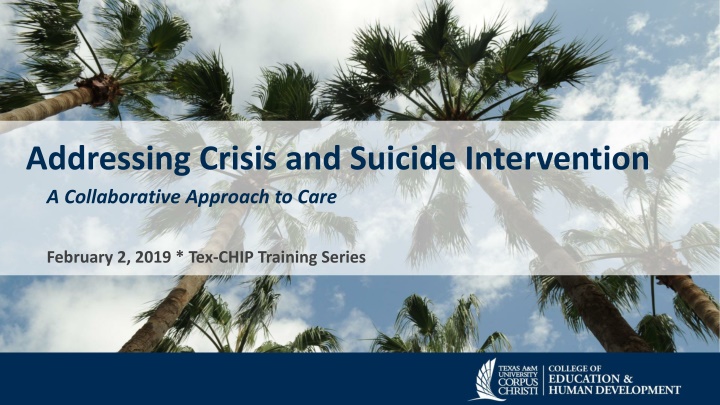
Collaborative Approach to Crisis and Suicide Intervention
Understanding the importance of psychological assessment in crisis and suicide intervention, this article highlights the role of providers in treating suicidality within a multi-disciplinary team. It emphasizes the need for thorough assessment, consideration when interacting with clients, and outlines a detailed treatment plan to decrease suicidality.
Download Presentation

Please find below an Image/Link to download the presentation.
The content on the website is provided AS IS for your information and personal use only. It may not be sold, licensed, or shared on other websites without obtaining consent from the author. If you encounter any issues during the download, it is possible that the publisher has removed the file from their server.
You are allowed to download the files provided on this website for personal or commercial use, subject to the condition that they are used lawfully. All files are the property of their respective owners.
The content on the website is provided AS IS for your information and personal use only. It may not be sold, licensed, or shared on other websites without obtaining consent from the author.
E N D
Presentation Transcript
Addressing Crisis and Suicide Intervention A Collaborative Approach to Care February 2, 2019 * Tex-CHIP Training Series
Psychological Assessment for Crisis and Suicide
Understanding Provider Role in Treating Suicidality Within a multi-disciplinary team approach, thorough and comprehensive assessment is an important component of assessing risk & developing the most appropriate treatment plan. Symptom check-lists (e.g., PHQ-9, OQ-30) administered prior to appointment can flag suicidal thoughts/feelings and are recommended. Suicide specific assessment tools and protocols (e.g., Beck Scale for Suicidal Ideation, CAMS, Columbia Suicide Severity Scale, SAFE-T) provide more detailed information related to client s suicidality Important to assess for conditions which can be associated with suicidality (e.g, anxiety, depression, bipolar disorder, substance abuse, PTSD, schizophrenia, borderline personality disorder). Share assessment results and diagnostic impressions with treatment team. Discussion with team of additional info needed to inform diagnosis and treatment plan (e.g., medical exam, lab work, medication evaluation). Summarize assessment results and communicate results to client.
Considerations when Interacting with Clients Important to maintain a calm, non-judgmental approach Responses to self-report tools must be reviewed & discussed with client before they leave the clinic. Self-report tools are not a substitute for direct interaction & clinical interview. Ask directly about past and current history of suicidal ideation, intent, plans, related behaviors, and protective factors. Clinically assess suicide at every initial evaluation & as clinically indicated at follow-up contacts. Acute versus chronic suicidality Be clear about limits of confidentiality and legal obligations
Our Treatment Plan Healthcare Domain: Psychological Assessment Provider: Psychologist Goals: Interventions: Objective: Decrease in suicidality as indicated by client report of: (a) Reduction is suicidal ideation (b)Reduction in suicidal behaviors (c) Effective management of suicidal thoughts/feelings a) safety & stability a) Stabilization Plan with Lethal Means Reduction (Hospitalization if client is imminent risk) b) Assess & monitor suicidal symptoms & risk level b) PHQ-9, CAMS or SAFE-T c) Identify & address suicidal drivers c) CAMS Therapeutic Worksheet CBT, DBT d) Medication evaluation referral, Stabilization Plan, CBT, DBT d) Symptom management
Measuring Outcomes/ Success On-going assessment using a self-report symptom checklist allows treatment team and client to track symptoms and discuss what is working in the treatment and what may be interfering with client s recovery. Client is an active participant in the treatment, collaborates in on-going treatment planning, uses stabilization/safety/crisis response plan, and reports reduction in frequency or intensity of SI and suicidal behaviors. For client with chronic suicidality, effective management of suicidality = positive outcome.
Communication Needed from Counselors Documentation of a suicide risk assessment includes both current and historical risk factors, observations from the session, rationale for actions taken or considered but not taken, and treatment plan including response plan if suicidality increases. What is the purpose of doing additional assessment with psychologist? What are the referral questions? Face to face consultation preferred

